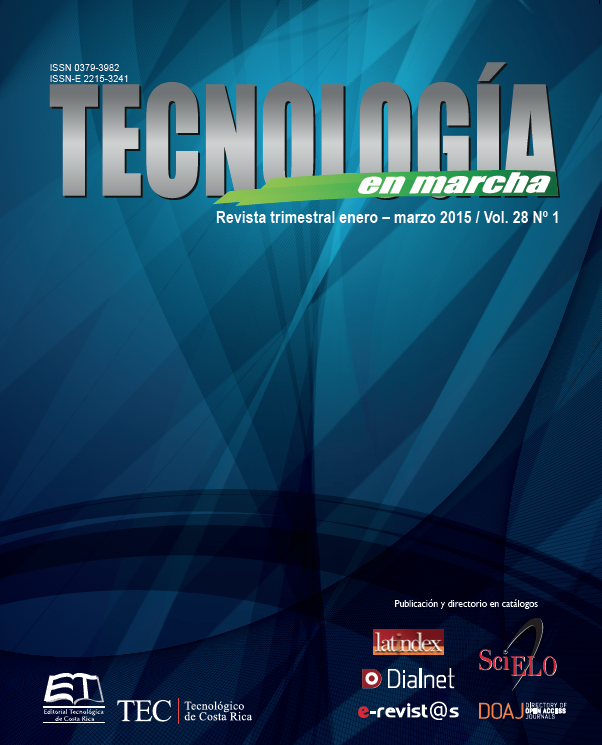Chemical properties of soil, forage production and population density of earthworms in a silvopastoral system in the Zona Huetar Norte of Costa Rica
Main Article Content
Abstract
This work was conducted in order to evaluate some chemical characteristics in the soil, the earthworm population density, production a nutritional value of forage produced where two systems were evaluated: T1= Erythrina berteroana associated with Brachiaria brizantha CV. Toledo CIAT 26110 and T2= Brachiaria brizantha CV. Toledo CIAT 26110 as a monoculture. The research was developed in the farm located in Los Angeles, San Isidro district, Canton of San Ramon, Alajuela Province, Costa Rica. Under the conditions this work was developed, no differences were found in the soil for pH values (5.50 and 5.60 for T1, y T2, respectively), however, differences were found for the percentage of organic matter (1.70 and 1.20, for T1 y T2, respectively) and the number of worms in the soil (314 y 263 m2 worms, for T1 y T2 respectively). With respect to dry matter production of Brachiaria brizantha, no differences were found among treatments, being the production statistically similar in any of the systems studied (average 33 t ha-1 yr-1 in cuts every 30 days). The biomass production was Erythrina berteroana 2.724 kg DM ha-1 yr-1 with cuts every six months. For the nutritional value of forage component of Brachiaria brizantha, no significant differences between treatments where found (average of 10.40% CP, 33% FAD, 56% NFD).
Article Details
Los autores conservan los derechos de autor y ceden a la revista el derecho de la primera publicación y pueda editarlo, reproducirlo, distribuirlo, exhibirlo y comunicarlo en el país y en el extranjero mediante medios impresos y electrónicos. Asimismo, asumen el compromiso sobre cualquier litigio o reclamación relacionada con derechos de propiedad intelectual, exonerando de responsabilidad a la Editorial Tecnológica de Costa Rica. Además, se establece que los autores pueden realizar otros acuerdos contractuales independientes y adicionales para la distribución no exclusiva de la versión del artículo publicado en esta revista (p. ej., incluirlo en un repositorio institucional o publicarlo en un libro) siempre que indiquen claramente que el trabajo se publicó por primera vez en esta revista.

